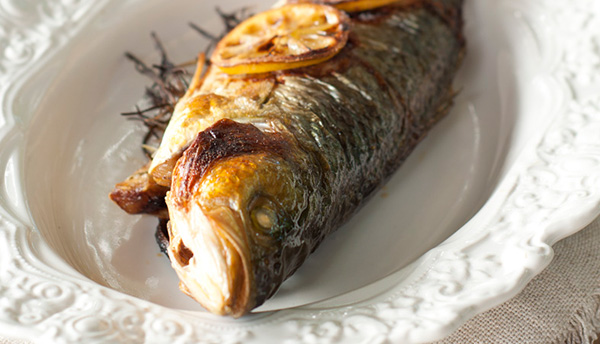
Not many people know how to choose sustainable seafood, or where to purchase it from. Sustainable Table has done the homework on species to choose and how to make more sustainable choices.
Most of us have a vague idea that there's a problem with the ocean's health and declining fish numbers, but fewer of us are savvy when it comes to knowing which seafood species are sustainable and how to spot them at the fishmonger. Unfortunately there isn't any one ‘sustainable seafood shop' you can go to, to ensure you're doing the right thing - sustainable seafood is more about what you buy than where you buy it.
We've got some advice on how to choose sustainable seafood, summarised from our e-book The Good Fish Book - which you can read more about at the end of this blog.
Diversify your choice
Some of the fish species that are popular among Australians are: tuna (particularly Southern Bluefin), salmon and flake, and these also happen to be the most unsustainable and overfished. Think about swapping these popular choices for a just-as-tasty, sustainable alternative such as mackerel, Australian salmon (sometimes called Bay Trout) or Luderick (see below for more). The important thing is to mix up your choices so that demand for particular species is spread, not focussed on a handful of species all the time.
Support sustainably-fished Australian seafood
Buying Australian seafood supports local communities and it won't have travelled as far to reach your plate. Australia ranks fourth in the world for responsibly-managed fisheries, yet 72% of the seafood we eat (especially cheap prawns, calamari and soft shell crab) is imported and often comes from countries such as Thailand and Vietnam, which rank 42nd and 45th respectively.
We've done the research and have come up with nine species that we think are a safe bet to choose when you're at the fishmonger:
- Australian Salmon
- Luderick
- Australian Sardines
- Leatherjacket
- Mussels
- Whiting
- Mullet
- Mahi Mahi
- Squid
These species are fished locally and breed bountifully and are lower down the food chain, making them more sustainable options.
Eat lower on the food chain
Small schooling fish like Sardines and Whiting are usually fast breeding and short-lived, making their stocks more robust and capable of withstanding fishing pressures. In comparison, larger breeds like Tuna and many Shark (flake) species are long-lived, take years to reach sexual maturity and breed in comparatively small numbers - meaning it is more difficult for populations to replenish themselves if overfished.
Make meat a treat… yes, that includes seafood.
If you're the type of person who eats tinned Tuna daily or loves to tuck into a Salmon steak or fish fillet, consider that Australians chomp through an average of 26kg of seafood each year, the world average is 19kg. Want to save the ocean and preserve fish for future generations? Start by eating your greens. Make seafood a treat by choosing it less often and when you do, enjoy sensible portions of sustainable species like the ones listed above.
Earlier we mentioned our eBook, which has great advice for eating seafood sustainably. Called The Good Fish Book and published by Sustainable Table, it features tips to get started, and 22 delicious recipes. Readers of this blog can use the promo code ECOFISH to get a 30% discount on the eBook. The offer ends on 22 December, so grab it today.

